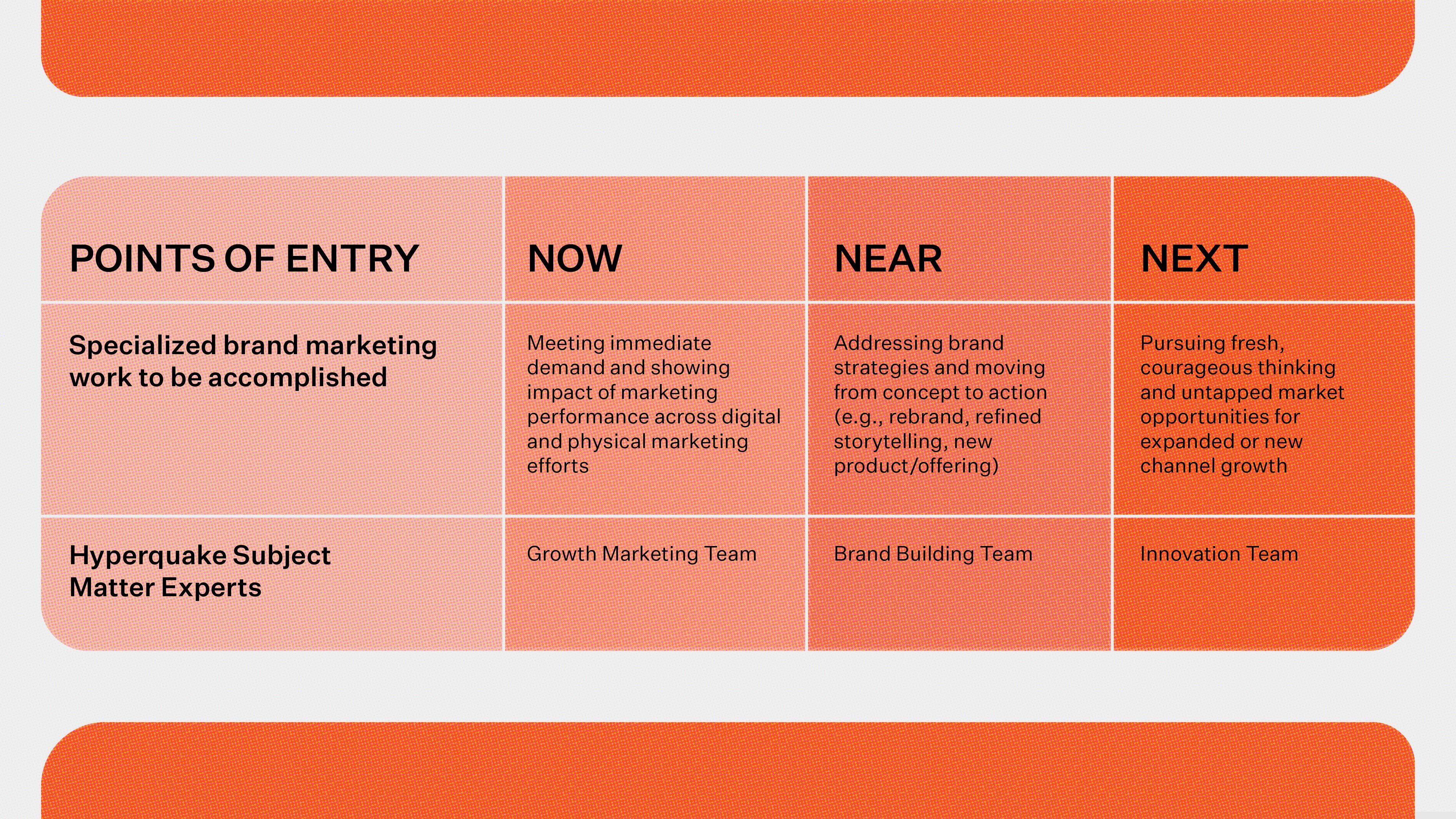Brand Building is No Longer Linear
There was a time when building a brand followed a clear and linear path. A company would start with upstream product development. Once the product was ready, they would define the brand, including the positioning, the story, and the look and feel. Then came the campaign to drive awareness and generate demand. The creative would get updated once a year, and every few years, there would be a brand refresh.
That rhythm worked when the market moved at a slower pace and consumer expectations evolved over time, not overnight. But today’s world does not reward that kind of sequencing.
Consumers are dynamic. Competitors are faster. The media landscape is always on. A five-year refresh cycle is a luxury few can afford, and a once-a-year creative update is rarely enough to keep a brand relevant.
For modern brand leaders, the path is no longer linear. It is layered.
How Brands Stay Ahead
To stay ahead, brands must be able to operate across multiple time horizons at once. They need to manage the now, the near, and the next.
.jpg)
- Now: Drive results. This is about capturing attention, converting interest, and proving value in real time. Brands cannot afford to wait for a perfect story before showing up. They need to create momentum and relevance today.
- Near: Sharpen the brand and story. While delivering results, brands must also zoom out and refine how they show up. Are we clear? Are we distinct? Are we consistent? The brand strategy cannot be static. It has to evolve to reflect what the market needs and what the business is becoming.
- Next: Expand the product pipeline and explore new value. Brand building does not just reflect the business. It helps shape it. The strongest brands are looking ahead, identifying whitespace, and using brand thinking to inform product and innovation decisions.
When brands treat these as sequential phases, they fall behind. The brands that thrive know how to operate across all three, continuously shifting between Now, Near, and Next.
Three Business-Critical Entry Points
Beyond the immediate marketing challenges at hand, you need to be looking ahead and assessing what’s next on the horizon to sustain growth, while having the foresight to anticipate a more robust future that’s not yet here.
This reality falls on today’s marketing leaders who must also accept this hard truth: when resources are finite, where do you invest?
What we’ve learned is that brand and marketing leaders want a strategic partner who can see the complexity of their full picture and confidently engage at one of these three different strategic entry points.
At Hyperquake, our internal team structure is aligned to address these entry points. This structure allows us to help you accomplish two important objectives:
- You get specific expertise needed at the desired point of entry; and
- A seamless transition of SMEs as you move toward new stages of work.
Here’s how our Innovation, Brand and Growth structure and team expertise align with each entry point.
Point-of-Entry Approach
Our nonlinear model to address critical brand marketing needs.

Now
In the NOW point of entry, clients often come to us in need of acquiring new clients, driving their marketing funnel toward conversion, and fixing or improving paid media performance. It is the day-to-day work of creating and capitalizing on demand.
While these performance needs exist for every brand marketer, the NOW-driven work we get invited into typically signals there is an immediate need and urgency to produce measurable results, aligned with a strategy, across performance, speed, and conversion. It’s fueled by creating opportunities that can demonstrate short-term impact in the market and then build upon that momentum.
Near
This work typically involves thoughtful brand positioning – and the requests we receive to drive branding initiatives fall within three distinct categories:
- Brand creation – a new brand from scratch or overhaul of an existing one
- Brand evolution – a brand refresh, which includes brand architecture, positioning, and storytelling
- Brand campaigns – campaign-focused storytelling and brand growth to internal audiences (employees, stakeholders) or external audiences (customers, prospects, consumers)
Next
The most innovative companies are the ones that actively apply fresh thinking toward opportunities that are not yet here. It’s about creating the future instead of waiting for the future to arrive. It’s rooted in bold ideas, emerging opportunities and entirely new markets. This is the innovative and disruptive work that many industries talk about, but few companies within them are willing to pursue.
Organizations that invest time and talent to shape future growth rather than solely relying on what currently exists operate differently. They lean into what’s possible, and often those brand leaders come to us for insight in addressing these type of needs:
- Building entirely new products and services for their company
- Researching the market and targeting a new type of consumer
- Rethinking the existing business model design to help facilitate growth
- Prototyping and validating ideas that can unlock new opportunities and revenue streams
The reality of today’s market demands that brands operate with a new rhythm—one that’s less about a clean, sequential march and more about a continuous, layered dance. You can’t afford to wait for a perfect moment to launch a new campaign, just as you can’t afford to let your brand strategy go stale while you chase short-term wins. The most successful brands today are built by leaders who can confidently manage all three time horizons at once, seamlessly shifting between the Now, the Near, and the Next.
At Hyperquake, we’re built to help you navigate this complexity. We don’t just address the immediate Brand challenge in front of you; we help you see the full picture and provide the right expertise at the right time. By aligning our structure with these critical entry points, we ensure that you can drive results today, sharpen your story for tomorrow, and shape the future of your business—all without missing a beat.

.jpg)
.png)
.jpg)
.gif)
